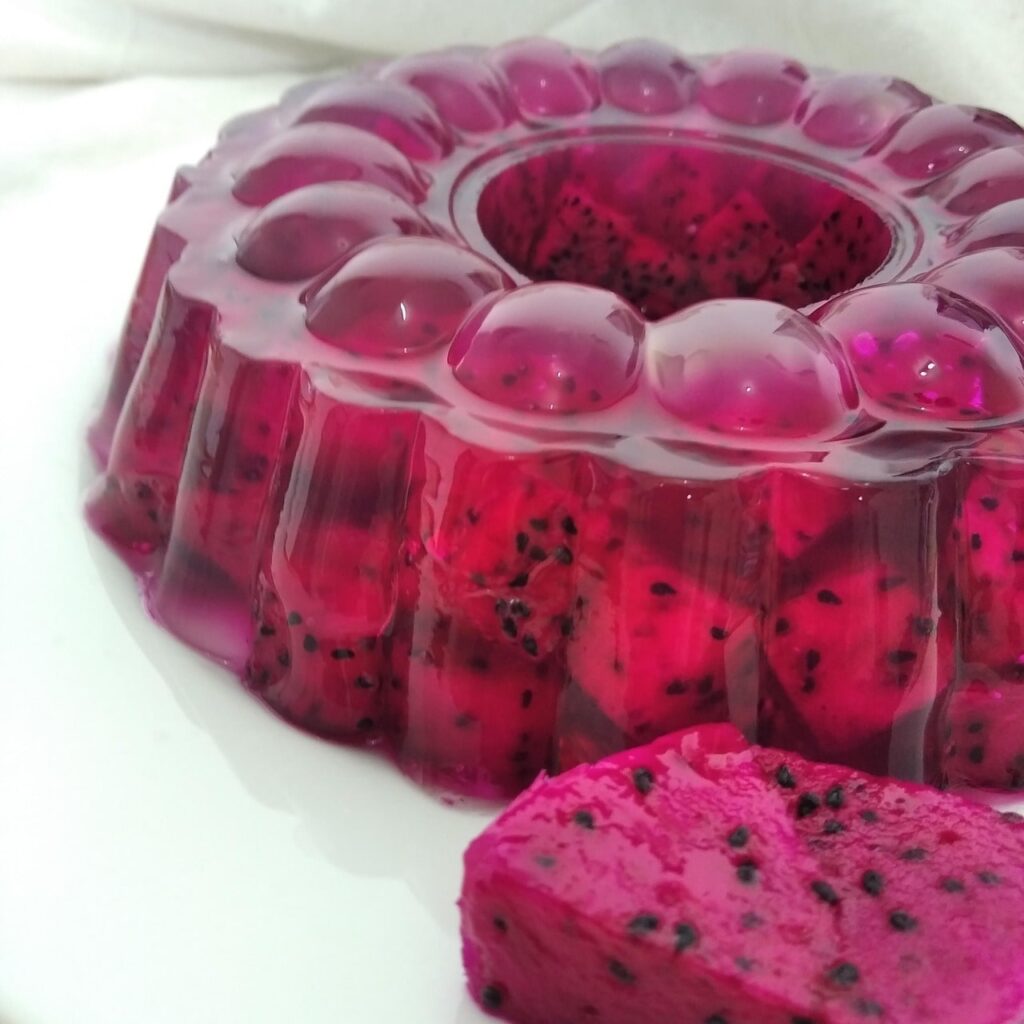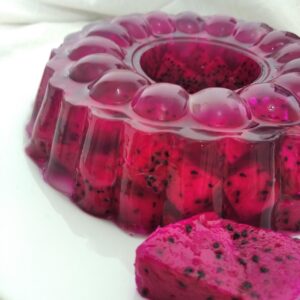Learn how to make delicious jelly at home with simple ingredients and easy steps. Discover its health benefits, tips for perfect setting, and answers to common jelly FAQs.

Ratings 05

What Is The Jelly
Jelly is a sweet, wobbly dessert made by dissolving flavored gelatin (or agar-agar for a vegetarian/vegan version) in hot water and then allowing it to set in the refrigerator. It is known for having a delicate, bouncy consistency and a smooth, glossy texture.
Jelly can be served downright, in layers with different colors, or merged with fruits, ice cream, or custard. It is a famous treat worldwide, especially among children, due to its vivid colors, fruity flavors, and pleasurable texture.
In desserts, “jelly” generally means a jelly dish, although in some countries it can also necessarily imply a fruit preserve, such as jam.
Health Benefits Of Jelly
While jelly is mainly enjoyed as a fun and tasty dessert, it does offer a few health-related benefits when consumed in moderation:
- Source of Hydration – Jelly has a high water content, making it refreshing and hydrating.
- Low in Calories (Plain Jelly) – When prepared without added sugar or toppings, jelly is relatively low in calories, which can be suitable for light desserts.
- Aids in Digestion (Gelatin-Based Jelly): Amino acids like proline and glycine found in gelatin may aid in gut health and digestion.
- Good for Skin, Hair, and Joints: Collagen, which is produced by gelatin, can support hair growth, preserve skin elasticity, and fortify joints.
- Fast Energy Source: Kids and athletes who need quick fuel will find jelly appealing because it contains sugar, which gives them a quick energy boost.
- Vegan/Vegetarian Option (Agar Jelly): Plant-based agar-agar jelly is a healthy substitute for gelatin, high in fiber, and helps with digestion.
Take Note:
- It’s best to consume commercial jelly in moderation because it frequently contains added sugar, artificial colors, and flavors.
- Homemade versions are healthier because they contain less sugar and natural fruit juice.
Tips For Making Jelly
- Dissolve Completely – Always stir the jelly crystals (or agar powder) in hot water until fully dissolved to avoid lumps or uneven setting.
- Please refer to the instructions package for instructions on how to use the included adequate water ratio. If there is too little water in the jelly, it will be too firm; if there is too much, it will be runny.
- Chill, Don’t Freeze – Refrigerate jelly to set. Freezing can end up causing it to become watery and lose its own texture.
- Carefully add the fruits: The enzymes in fresh papaya, kiwi, and pineapple inhibit them from establishing the jelly. Start by softly cooking the fruit if you plan to use it.
- Set in Layers (Optional): To stop mixing, enable each layer of colorful layered jelly to set some before trying to add the next.
- Grease the Molds: To make life simpler, to delete the jelly from the mold, lightly brush the molds with a neutral oil.
- Enhance Flavor Naturally: For a richer, extra genuine flavor, try substituting fruit juice for some of the water.
- Patience is Key – Allow at least 3–4 hours for jelly to set properly in the fridge, or overnight for best results.
FAQ Jelly
01. How Long Does Jelly Take To Set?
Jelly usually takes 3–4 hours to set in the refrigerator. Let it sit overnight for ideal impacts.
02. Is Gelatin Necessary To Make Jelly?
Yes! You can use agar-agar (plant-based) or pectin as vegetarian/vegan alternatives to gelatin.
03. What Was Going To Prevent The Proper Setting Of My Jelly?
few common causes include adding fresh pineapple, kiwi, or papaya (which contain enzymes that prevent setting), using too much water, or not completely dissolving the crystals.
04. What Is The Shelf Life Of Jelly In The Refrigerator?
Homemade jelly lasts about 5–7 days in the refrigerator when stored in a covered container.
05. Is It Possible To Freeze Jelly To Speed Up Its Setting Time?
Freezing is not advised because it alters the texture and leaves the thawed jelly grainy and watery.
Q6. Is Jelly Healthy To Eat Every Day?
Although commercial versions of plain jelly frequently contain sugar, artificial colors, and flavors, plain jelly is low in calories and should be consumed in moderation.
07. Can I Use Cream Or Milk To Make Jelly?
Yes, you can make milk jelly by mixing the dissolved jelly crystals with warm milk instead of cold water for a creamy version.

Jelly
Ingredients
- 1 packet flavored jelly crystals (about 90 g)
- 2 cups hot water (boiling)
- 1 cup cold water
(Optional: fresh fruits like strawberries, grapes, or apples – avoid pineapple, kiwi, or papaya as they prevent jelly from setting.)
Instructions
- Boil water Heat 2 cups of water until it reaches a rolling boil.
- Dissolve jelly crystals Pour the jelly crystals into a mixing bowl. Add the hot water and stir continuously until completely dissolved.
- Add cold water Mix in 1 cup of cold water and stir well.
- Pour into molds Transfer the mixture into molds, cups, or a large dish.
- Chill Place in the refrigerator for at least 3–4 hours, or until firm and set.
- Serve Unmold carefully or serve directly from cups. Garnish with fruit or whipped cream if desired.
-
Jelly
Learn how to make delicious jelly at home with simple ingredients and easy steps. Discover its health benefits, tips for perfect setting, and answers to common jelly FAQs. Ratings 05 What Is The Jelly Jelly is a sweet, wobbly dessert made by dissolving flavored gelatin (or agar-agar for a vegetarian/vegan version) in hot water and…


Leave a Comment